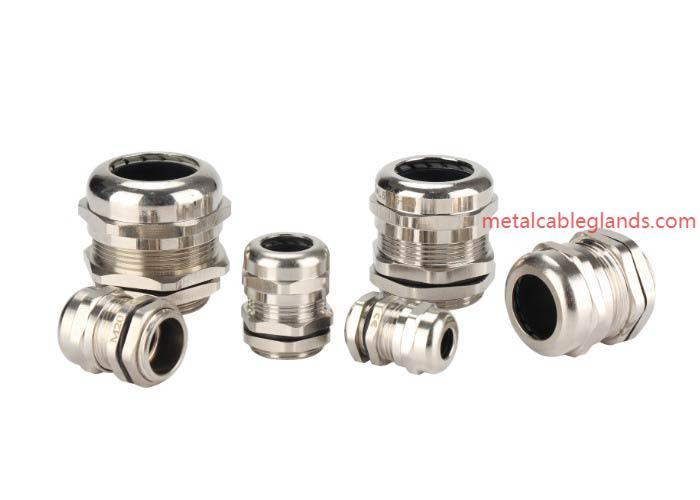Engineers working in demanding electrical and mechanical environments often evaluate sealing, durability, and long-term stability as top priorities, which is why the performance characteristics of a Stainless Steel Cable Gland become central when designing secure cable entries, especially for industries that depend on corrosion resistance and mechanical integrity. As applications continue to evolve, the ability of a Stainless Steel Cable Gland to maintain firmness under load, vibration, moisture, and temperature fluctuations determines whether a system remains safe and operational over time. Zhejiang Hongjuesi Connector Co., Ltd. plays a significant role in supplying upgraded designs that match modern performance requirements.
The first aspect engineers typically examine is mechanical retention. A properly engineered stainless-steel gland delivers consistent compression around the cable sheath, allowing the assembly to resist tension, bending, and pull-out forces. Because stainless steel has inherent structural stability, the retention force remains reliable even in settings where the equipment operates continuously or undergoes frequent maintenance cycles. This is where connector manufacturers like Zhejiang Hongjuesi refine thread accuracy and clamping components to ensure that retention strength remains stable throughout long operating periods.
Another performance factor is sealing integrity, which directly affects whether the environment can infiltrate sensitive electrical systems. Stainless steel glands generally incorporate elastomeric seals capable of resisting water, oil, and dust, which protects conductors from corrosion or short-circuit risk. Robust sealing is especially important in food processing facilities, wastewater treatment systems, marine platforms, and outdoor installations. The precision fit between the gland body and sealing insert helps maintain ingress protection levels even after repeated cable adjustment or equipment vibration.
Thermal stability is a critical performance dimension in electrical infrastructure. Stainless steel maintains strength at both high and low temperatures, preventing deformation or seal collapse during thermal cycling. Equipment installed near furnaces, automated manufacturing lines, or refrigeration equipment requires cable glands that will not degrade under continuous heat or cold exposure. Advanced processing technologies, such as CNC machining and controlled finishing, allow Zhejiang Hongjuesi Connector to maintain material consistency that supports predictable thermal performance across extended service life.
Resistance to corrosion is also central to functional reliability. Harsh chemical vapors, saltwater exposure, industrial cleaning agents, and atmospheric pollutants can quickly degrade many metals. Stainless-steel alloys slow the oxidation process significantly and maintain surface integrity without developing structural weaknesses. This long-term resistance is crucial for coastal infrastructure, petrochemical facilities, offshore energy systems, and processing lines where chemicals are frequently applied. The ability to preserve both appearance and function helps reduce maintenance time and unexpected shutdowns.
Vibration resistance is another performance attribute that should not be overlooked. Environments with moving machinery or frequent mechanical shocks can cause loose fittings, resulting in cable fatigue, safety risks, or operational interruption. Stainless steel glands, especially when machined with precise thread geometry, can sustain consistent torque and prevent back-off under vibration. Zhejiang Hongjuesi Connector uses locknut and sealing-ring improvements to help enhance vibration resistance in transportation systems, conveyor lines, and mechanical enclosures.
Another functional aspect involves compatibility with armored and unarmored cables. Different cable types require different clamping mechanisms, thread forms, and sealing configurations. Stainless steel glands can be customized for braid, interlock armor, or smooth-sheathed cables, allowing engineers to match the gland type with installation needs. This adaptability ensures that connection reliability does not vary across cable infrastructures. Industries such as automation, robotics, and manufacturing benefit from such versatility when integrating multiple cable formats into one system.
The electrical grounding performance of stainless steel cable glands also contributes to overall functional safety, especially for armored cable systems. Maintaining proper grounding continuity helps avoid electrical faults and ensures that any stray current is safely discharged. Precision-machined components enhance the stability of grounding paths, supporting compliance with safety regulations across industrial and commercial installations.
Ease of installation remains a performance feature many overlook but often influences real-world efficiency. Smooth threads, optimized torque requirements, and well-designed clamping inserts reduce installation time and lower the chance of assembly errors. Installers benefit from predictable torque feedback and stable grip, ensuring that the gland connects properly and remains secure even in cramped or challenging working environments.
These performance characteristics—mechanical strength, sealing reliability, corrosion resistance, thermal stability, vibration endurance, cable compatibility, grounding capability, and installation efficiency—demonstrate why stainless steel glands remain a preferred solution across various industrial sectors. With manufacturers like Zhejiang Hongjuesi Connector continuing to improve machining precision and material consistency, these components continue to evolve to meet advanced engineering expectations. For professionals interested in more specifications or related product solutions, additional information can be found at https://www.metalcableglands.com/product/ .



